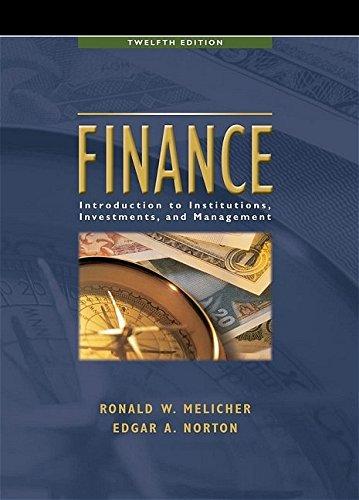Question
Modern Monetary Theory points out that banks in the real world are not constrained by the level of their deposits but rather by their level
Modern Monetary Theory points out that banks in the real world are not constrained by the level of their deposits but rather by their level overall risk based on their capitalization or "leverage ratio". Suppose a bank balance sheet looked like this with a 5% required reserve ratio.
| Assets |
| Liabilities |
| Net Worth |
| Reserves | $100 | Deposits | $2,000 |
|
| Loans | $1,000 |
|
|
|
| Treasury Bills | $0 |
|
|
|
| Other investments | $1,900.00 |
|
|
|
|
| $3,000.00 |
| $2,000.00 | $1,000.00 |
| Leverage |
|
|
| 1.0 |
a. How would this balance sheet change if the bank provided a $1,000 loan to one of its depositors who deposited this loan back in the bank?
b. What would this do the bank's capitalization or "leverage ratio"?
c. Would the bank still be in reserve requirement compliance? One way to get back into compliance would be to sell some of its other investments to raise reserve cash. What would the bank balance sheet than look like?
d. Now suppose $1,500 of the bank's $2,000 in loans had to be written off as they were "non-performing" (borrowers could not pay them back). What would the bank's balance sheet then look like? What would be the bank's net worth?
e. What does the balance sheet in d) imply about the relationship between bank created money, leverage, and risk?
Step by Step Solution
There are 3 Steps involved in it
Step: 1

Get Instant Access to Expert-Tailored Solutions
See step-by-step solutions with expert insights and AI powered tools for academic success
Step: 2

Step: 3

Ace Your Homework with AI
Get the answers you need in no time with our AI-driven, step-by-step assistance
Get Started


